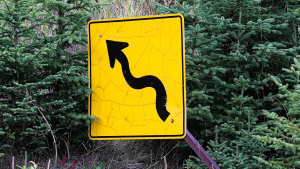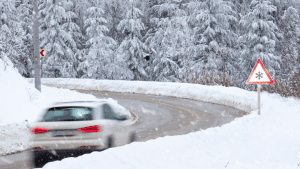Contents
- 7 Essential Fall Driving Safety Tips for a Safe and Enjoyable Journey
- Tip 1: Prepare your vehicle
- Tip 2: Adjust driving habits
- Tip 3: Deal with changing weather conditions
- Tip 4: Maintain visibility
- Tip 5: Minimize distractions
- Tip 6: Emergency preparedness
- Tip 7: Additional tips for fall driving safety tips
- Driving in fall weather
- Set of driving conditions
- How to be safe this season driving
- Driving in the fall
- Conclusion
- FAQs (Frequently Asked Questions)
7 Essential Fall Driving Safety Tips for a Safe and Enjoyable Journey
Fall driving safety tips: as the vibrant colors of autumn surround us, it’s important to remember that the fall season also brings unique challenges on the road.
From slippery leaves to changing weather conditions, practicing safe driving habits becomes crucial.
In this article, we will provide you with 7 essential fall driving safety tips that will help you navigate the roads confidently, ensuring a safe and enjoyable journey.
Tip 1: Prepare your vehicle
Before embarking on your fall adventure, take a moment to prepare your vehicle.
Start by checking the tire pressure and tread depth. Well-inflated tires with good tread provide better traction, especially on wet and slippery roads.
Additionally, ensure that all your headlights and taillights are functioning correctly, as they play a vital role in maintaining visibility during shorter daylight hours.
Don’t forget to inspect your windshield wipers and fluid levels. Fall brings occasional rain showers, and having properly functioning wipers and sufficient fluid will enhance your visibility during wet conditions.
Tip 2: Adjust driving habits
The transition to fall requires adjusting your driving habits to accommodate the changing road conditions.
One of the essential fall driving safety tips is to reduce your speed and maintain a safe distance from the vehicle ahead.
Wet leaves can make the road slippery, so it’s crucial to drive cautiously to avoid skidding or losing control.
Moreover, be vigilant for deer and other wildlife, as they are more active during this time of the year.
Use caution, especially when driving in wooded areas or near open fields.
By staying alert and observing your surroundings, you can minimize the risk of accidents.
Tip 3: Deal with changing weather conditions
This one key fall driving tips
Fall brings a mix of weather conditions, including foggy mornings and occasional rain showers.
To navigate these changing weather conditions safely, it’s important to be prepared.
When encountering fog, reduce your speed and use your low-beam headlights.
Maintain a safe distance from the vehicle in front and be cautious of sudden stops.
When driving in the rain, adjust your driving technique accordingly.
Increase the distance between your vehicle and the one in front to allow for additional braking distance.
Be mindful of hydroplaning and avoid sudden maneuvers.
It’s crucial to adapt to the weather and road conditions to ensure your safety.
Tip 4: Maintain visibility
Maintaining visibility is paramount for safe driving, particularly during the fall season.
To enhance visibility, keep your windows and mirrors clean.
Falling leaves and condensation can obstruct your view, so regular cleaning is essential.
Additionally, utilize defogging techniques effectively to prevent fogged windows.
Another crucial aspect of visibility is the proper use of headlights and fog lights.
Ensure that you have the appropriate lighting for the conditions.
Use your headlights during reduced daylight hours, and use fog lights only when necessary to avoid dazzling other drivers.
Tip 5: Minimize distractions
Distractions can significantly impair your ability to drive safely.
During fall road trips, it’s important to avoid using mobile devices while driving.
Distracted driving can lead to accidents and jeopardize your safety and the safety of others on the road.
Secure loose items in the vehicle to prevent them from becoming potential distractions.
Loose objects can roll around or obstruct your view, diverting your attention from the road.
Additionally, limit conversations and focus on driving. It’s important to give your full attention to the task at hand.
Tip 6: Emergency preparedness
Being prepared for emergencies is essential for any road trip, especially during the fall season.
Carry a well-stocked emergency kit that includes items like a flashlight, first aid supplies, jumper cables, and a spare tire.
Familiarize yourself with how to handle emergencies on the road, such as changing a tire or jump-starting a car.
It is also crucial to have a plan for roadside assistance.
Research and subscribe to a reliable roadside assistance service that can provide help in case of a breakdown or other emergencies.
Knowing that you have assistance just a phone call away can give you peace of mind during your fall journeys.
Tip 7: Additional tips for fall driving safety tips
In addition to the essential tips mentioned above, here are a few more recommendations to ensure your fall driving safety tips:
Be mindful of school zones and bus stops: As the school year begins, be extra cautious when driving near school zones and bus stops.
Children may be crossing the road or waiting for the bus, so slow down and stay alert.
Stay updated with weather forecasts: Before hitting the road, check the weather forecasts for your route. This will help you anticipate any potential weather-related challenges and plan accordingly.
Be cautious of reduced daylight hours: With the arrival of fall, daylight hours become shorter.
Be mindful of the changing light conditions, especially during dawn and dusk, as visibility may be reduced.
Make sure your headlights are working properly and switch them on when necessary.
Driving in fall weather
Driving during fall weather can present unique challenges for motorists. Here are some important factors to consider when driving during this season:
- Wet Leaves: Falling leaves can create a slippery surface on the road, especially when they become wet. These conditions reduce traction, making it harder to brake and maneuver. Exercise caution, maintain a safe following distance, and drive at a slower speed to prevent skidding.
- Fog: Autumn mornings often bring foggy conditions, which can significantly reduce visibility. Use your vehicle’s fog lights and low-beam headlights to improve visibility, and avoid using high beams as they can reflect back and impair your vision. Reduce your speed and be prepared for sudden changes in road conditions.
- Sun Glare: As the sun gets lower in the sky during fall, it can cause intense glare, especially during sunrise and sunset. Keep a pair of sunglasses handy, clean your windshield regularly, and use your sun visor to block the glare. Slow down if your vision is compromised.
- Changing Weather: Fall weather can be unpredictable, with sudden changes in temperature and precipitation. Stay updated on weather forecasts before heading out, and be prepared for rain, fog, or even early snowfall. Adjust your driving behavior accordingly, allowing for extra time and maintaining a safe distance from other vehicles.
- Wildlife Hazards: Fall is a season of migration for many animals, such as deer. Be vigilant, particularly during dawn and dusk when they are most active. Watch for animal crossing signs and scan the sides of the road for any potential hazards. If you encounter wildlife on the road, reduce your speed and avoid swerving abruptly, as it may lead to a loss of control.
- Reduced Daylight Hours: As fall progresses, the days become shorter, leading to reduced daylight hours. Ensure your vehicle’s headlights, taillights, and turn signals are in proper working condition. Be prepared for driving in low-light or dark conditions, and use your headlights even during twilight hours for better visibility.
- Wet or Icy Roads: In some regions, fall can bring rain showers and the possibility of early frost or icy conditions. Slow down and avoid sudden braking or acceleration, as these actions can cause your vehicle to lose traction. Leave extra space between you and the vehicle in front to allow for increased stopping distance.
- School Zones: With the start of the school year, be mindful of school zones and increased pedestrian traffic. Observe lower speed limits and be cautious around school buses, children, and crossing guards.
Remember, defensive driving is crucial in any weather conditions. Stay focused, avoid distractions, and adapt your driving to the specific challenges posed by fall weather.
Set of driving conditions
Certainly! Here are some driving conditions that you may encounter:
- Rainy Conditions: Driving in rainy weather can reduce visibility and make the roads slippery. Be sure to turn on your headlights, reduce your speed, and increase the following distance between you and the vehicle in front. Use windshield wipers and defrosters to maintain clear visibility.
- Snowy/Icy Conditions: Driving in snow or on icy roads requires extra caution. Clear all snow and ice from your vehicle before driving, including the windows, mirrors, and roof. Drive at a slower speed, brake gently, and accelerate slowly to maintain traction. Use winter tires or tire chains if necessary.
- Foggy Conditions: Fog can significantly reduce visibility, making it crucial to use low-beam headlights or fog lights. Avoid using high beams, as they can reflect back and impair your vision. Reduce your speed, be prepared for sudden changes in road conditions, and maintain a safe following distance.
- Construction Zones: When driving through construction zones, be aware of reduced speed limits, lane closures, and the presence of construction workers and equipment. Follow the instructions of flaggers or signs, and be prepared for temporary lane shifts or uneven road surfaces.
- Heavy Traffic: In congested areas or during peak travel times, heavy traffic can be challenging. Maintain a safe following distance, be patient, and avoid aggressive maneuvers. Stay alert and use your mirrors frequently to be aware of the vehicles around you.
- Nighttime Driving: Driving at night poses unique challenges due to reduced visibility. Ensure that your headlights, taillights, and turn signals are functioning properly. Dim your dashboard lights to minimize glare and keep your eyes focused on the road ahead. Be cautious of pedestrians, cyclists, and wildlife that may be harder to see.
- Rural or Mountainous Roads: Rural areas or mountainous terrain may have winding roads, steep inclines, and unpredictable wildlife. Reduce your speed, pay attention to road signs, and use lower gears when descending steep slopes. Watch for animals crossing the road and be prepared to yield.
- Urban Driving: Navigating through city streets involves dealing with heavy traffic, pedestrians, cyclists, and frequent intersections. Observe traffic signals, be cautious of pedestrians and cyclists, and use your mirrors frequently. Plan your route in advance to minimize distractions and sudden lane changes.
Remember, always prioritize safety when encountering different driving conditions. Adapt your driving behavior, maintain focus, and exercise patience to ensure a safe and comfortable journey.
How to be safe this season driving
To ensure safe driving this season, follow these tips:
- Maintain Your Vehicle: Regularly check your vehicle’s condition. Ensure the tires are properly inflated, brakes are in good shape, and all lights are working. Keep up with scheduled maintenance and address any issues promptly.
- Check Weather Conditions: Stay informed about the weather before you drive. Be aware of any storms, heavy rain, or other hazardous conditions. Adjust your travel plans if necessary to avoid dangerous weather.
- Buckle Up: Always wear your seat belt, and ensure all passengers are properly restrained. Seat belts save lives and reduce the risk of injury in case of an accident.
- Avoid Distractions: Focus on the road and eliminate distractions. Put away your phone, avoid eating or grooming, and keep your attention solely on driving. If needed, use hands-free options for calls and navigation.
- Observe Speed Limits: Adhere to posted speed limits and adjust your speed according to road and weather conditions. Slow down in inclement weather or on slippery roads to maintain control of your vehicle.
- Maintain a Safe Distance: Keep a safe following distance between your vehicle and the one ahead. This allows for adequate reaction time and braking distance. Increase the gap during adverse weather conditions.
- Use Turn Signals and Check Blind Spots: Signal your intentions early and check your blind spots before changing lanes or making turns. Be aware of other drivers around you and ensure they are aware of your movements.
- Be Cautious of Pedestrians and Cyclists: Pay extra attention to pedestrians and cyclists, especially in urban areas. Yield to pedestrians at crosswalks and give cyclists ample space when passing.
- Stay Sober: Never drive under the influence of alcohol, drugs, or any substances that impair your ability to drive safely. Plan ahead for alternative transportation if you anticipate consuming alcohol.
- Stay Alert and Avoid Fatigue: Get enough rest before driving and take breaks if needed during long trips. Fatigue can impair your reaction time and decision-making abilities. If you feel drowsy, pull over in a safe area and rest.
Remember, practicing safe driving habits is essential throughout the year. By following these guidelines, you can help protect yourself, your passengers, and others on the road.
Driving in the fall
Driving during the fall season presents its own set of considerations. Here are some tips for driving during this time:
- Wet Leaves: Falling leaves can make the road slippery, especially when wet. Exercise caution and reduce your speed when driving over leaf-covered roads. Leaves can obscure lane markings and hide potholes, so stay alert and be prepared for unexpected hazards.
- Sun Glare: The angle of the sun changes in the fall, resulting in increased glare during sunrise and sunset. Keep a pair of sunglasses in your vehicle to reduce glare and maintain visibility. Use your sun visor to block direct sunlight when necessary.
- Changing Weather: Fall weather can be unpredictable, with sudden temperature drops and occasional rain showers. Stay updated on weather forecasts before heading out and be prepared for changing conditions. Adjust your driving behavior accordingly and allow for extra travel time if needed.
- Fog: Foggy conditions are common in the fall, particularly during early mornings and evenings. Reduce your speed and use low-beam headlights or fog lights to improve visibility. Avoid using high beams as they can reflect off the fog and impair your vision further.
- Wildlife Activity: Fall is a season of increased wildlife activity, including deer and other animals. Be watchful, especially during dawn and dusk when animals are more active. Heed animal crossing signs, scan the roadside for movement, and slow down if you spot any animals near the road.
- Fallen Branches and Debris: Strong winds and storms can cause branches and debris to fall onto the road. Stay alert and scan the road ahead for any obstructions. Slow down and safely maneuver around fallen branches or debris, if possible.
- Reduced Daylight: As fall progresses, daylight hours become shorter. Make sure your vehicle’s headlights, taillights, and turn signals are in good working order. Use your headlights during twilight hours and inclement weather to ensure visibility.
- School Zones: With the start of the school year, be mindful of school zones and increased pedestrian and vehicle traffic around schools. Observe reduced speed limits, watch for children crossing the road, and follow any instructions from school crossing guards.
Remember, defensive driving is crucial during the fall season. Stay focused, adapt to changing conditions, and drive with caution to ensure a safe and pleasant journey.
Conclusion
As you embark on your fall journeys, remember that safety should be your top priority.
By following these 7 essential fall driving safety tips, you can ensure a safe and enjoyable journey for yourself, your passengers, and others on the road.
Prepare your vehicle, adjust your driving habits, be prepared for changing weather conditions, maintain visibility, minimize distractions, and stay prepared for emergencies.
By practicing these safety measures, you can fully embrace the beauty of the fall season while keeping yourself and others safe on the road.
FAQs (Frequently Asked Questions)
Q: Are fall driving safety tips only applicable in rural areas? A: No, fall driving safety tips are applicable in both rural and urban areas. The changing weather conditions and increased wildlife activity during fall can affect drivers in various locations. Q: Do I need to change my tires for fall driving? A: While changing to specific fall tires is not necessary for most drivers, it's important to ensure that your tires are in good condition with proper tread depth and inflation. Q: Should I use my high beams in foggy conditions? A: No, it's recommended to use your low-beam headlights or fog lights in foggy conditions. High beams can cause glare and reduce visibility for both you and other drivers. Q: Is it important to adjust my driving habits for wet leaves on the road? A: Yes, wet leaves on the road can be extremely slippery. It's crucial to reduce your speed, maintain a safe distance, and avoid sudden maneuvers to prevent skidding or loss of control. Q: Are fall driving safety tips only for long road trips? A: Fall driving secret tips are applicable to all types of driving, whether it's a long road trip or daily commuting. Implementing these tips will help ensure safety on any fall journey. Q. What can be a hazard when driving in autumn? A. Wet leaves on the road can create slippery conditions, posing a hazard. Q. When driving in fall, what are two things we must be cautious of and why? A. We must be cautious of sun glare, which can reduce visibility, and wildlife activity, as animals are more active during this season, increasing the risk of collisions. Q. What are three fall driving safety tips to consider when driving in the city? A. Use turn signals and check blind spots when changing lanes, watch out for pedestrians and cyclists, and adhere to posted speed limits and traffic signals. Q. What are the fall driving safety tips for wet leaves? A. Reduce speed, maintain a safe following distance, and be prepared for reduced traction and longer stopping distances when driving over wet leaves.




